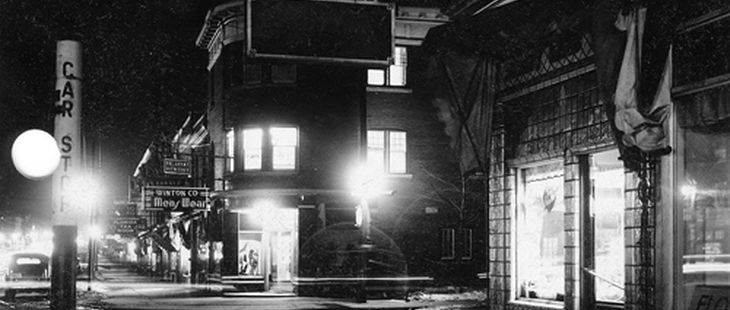
(City of Toronto Archives) Toronto is very good at forgetting. A few months ago I found the address of an opium den. Buried in a long forgotten newspaper was a story about Toronto’s early drug trade. Our intrepid reporter, determined to infiltrate the city’s criminal establishment, sacrificed his respectability and health in order to cultivate an addiction to poppy based opiates. While scouring the city for his next fix he carefully documented the who’s, the where’s, and the when’s of the opium business so that when he finally surfaced, having kicked the habit, he could write the story of a career, and blow the lid off this poor conservative, colonial town. I don’t believe for a second that that’s how it went down, but it made a good story and did it ever sell papers. Either way, at the bottom of the article the reporter catalogued the names and addresses of all the establishments he supposedly frequented. Most were sufficiently vague to prevent me from locating the building with precision (Next to the barbershop near Queen and Bathurst, for instance). One, however, was a complete address; excited, I did some more sleuthing only to discover that my opium den was located somewhere within the Eaton’s Centre. One opiate of the masses for another. (City of Toronto Archives) The more I thought about it, the more I realized that the loss of the opium den to a shopping centre is something of a perfect metaphor for the city and its history. This city likes to forget. Where once there was an opium den and an entire neighborhood with nooks and crannies and alleyways and improvised sewer systems, there is now a shopping mall. And with the exception of a few gentrified old factories, the entire downtown is this way: entirely re-done. I say it’s appropriate because as long as there has been Toronto, there’s been an idea of what Toronto must become and, with that, a willingness to sacrifice what was. There is not, I suggest, a more toxic idea in this city’s history than “Toronto the Good.” Inspired in the latter part of the nineteenth century, Toronto the Good became the rallying cry of the progressive wing of the city’s elite. Let us be Christian and educated, they proclaimed. Let our city be free of disease and crime. Let Toronto be a centre of commercial integrity. And to achieve this end, they rode roughshod over the city as it was. Those criminalized spent years in prisons, those neighbourhoods deemed slums were razed, and those opposed to entrenched business interests were ignored or suppressed. Over the past six months, through the Standard Historical Society column, I’ve tried to recapture the city they swept away and make note of just how they did the sweeping. Doctors, searching for respectability and the imprimatur of scientific credibility robbed the graves of the poor for bodies to practice dissections upon; chicken stands in Kensington (and urban farming writ large) were banned because of staid Toronto’s xenophobia; homosexual men and young lovers who had sex in the only private space they could find–parks–were sent to jail for horrifyingly long jail terms; cyclists demanded that the city reconfigure itself to support two-wheeled getaways for the weekend; all while whisky became the drink of the working class, saloons stayed open late, and gambling transitioned from a criminal enterprise to a respectable one. (City of Toronto Archives) But why care? Why bother remembering those subjected to “the enormous condescension of posterity.” For one, it’s important to remember the violence of one sort or another that brought this city into being. It’s also important to look past the elites of any era who always seem to know best, and focus on the people who sometimes lived at odds with what was expected. And if you’re ever going to understand a city’s DNA, you have to poke around the nether regions, the city’s nightside, that place where almost everyone, at some point, comes to play or maybe work. “The night,” writes Luc Sant, “is the corridor of history, not the history of famous people or great events, but that of the marginal, the ignored, the suppressed, the unacknowledged; the history of vice, of error, of confusion, of fear, of want; the history of intoxication, of vainglory, of delusion, of dissipation, of delirium.” The long history of Toronto’s night is, to me, the most exciting and revealing aspect of the city’s narrative. The day is progress, a better work day, a more perfectly managed city, a better-crafted neighborhood plan; the night is chaos, unpredictable, creative. There is, thus, a second lesson in the opium den. Even if the Eaton’s Centre replaced old parts of the city, I’m pretty sure an intrepid reporter could still get pretty high there and scandalize Toronto all over again. Well, maybe we wouldn’t be scandalized, but you get my point. (City of Toronto Archives) __ Simon Wallace writes the Standard Historical Society column for Toronto Standard.














